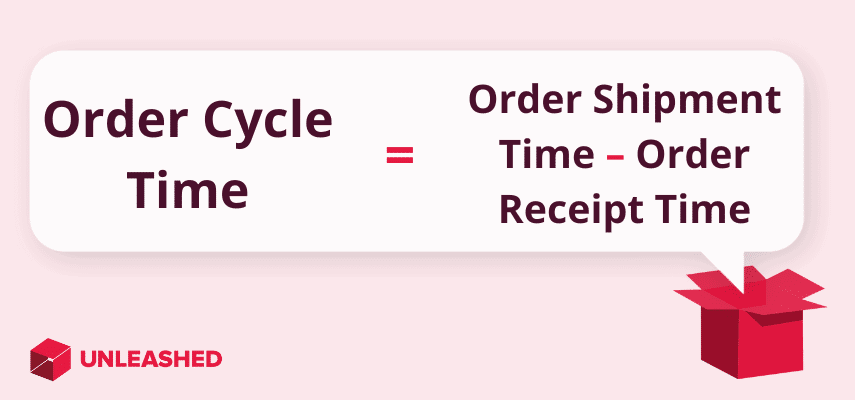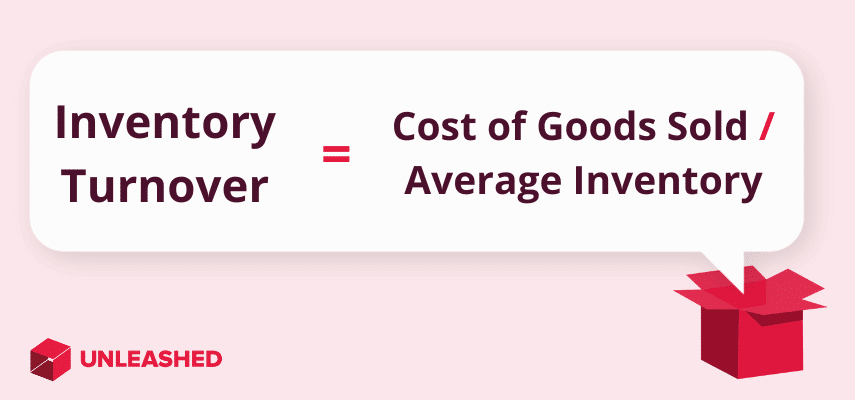
Key Performance Indicators (KPIs) help manufacturers determine operational strengths and flaws. By tracking the right manufacturing KPIs in your production operations you can accurately monitor performance to ensure the consistent and timely delivery of quality products.
What are KPIs in manufacturing?
KPIs in manufacturing are quantifiable production management metrics used by manufacturers to measure production performance over time. They provide clear insights and benchmarks around the operational efficiency of specific manufacturing processes.
When you monitor how fast you pick orders or how much an item costs to produce, you get an idea of the profitability of that process. The same applies to other key manufacturing KPIs mentioned in this guide.
By comparing this information against previous performance and industry standards, you can then begin to identify the bottlenecks that need attention. The result is a constantly improving business strategy that minimises time and material waste while maximising workplace productivity.
The 10 best manufacturing KPIs for improving efficiency
Manufacturing KPIs determine operational performance, timeliness of tasks, and financial costs. These manufacturing KPIs also help to measure the effectiveness of your operational processes and activities.
1. Order cycle time
Order cycle time is used to determine how efficient your order fulfilment processes are.
Order cycle time KPIs calculate the average time between when you receive an order and when it is shipped. Total order cycle time uses customer details, the order date, the delivery date, and the total number of orders shipped.
You can calculate order cycle time using the formula:
(Delivery Date – Order Received Date) / Total Number of Orders Shipped = Order Cycle Time
This KPI reveals where you need to develop new strategies to improve the speed of your order fulfilment.
Ways to enhance your order cycle time include:
- Understanding order profiles
- Reallocating resources to the areas of greatest activity
- Reducing travel time
- Prioritising inventory replenishments

2. Overall Equipment Effectiveness
The Overall Equipment Effectiveness (OEE) KPI measures the productivity of your manufacturing plant without any downtime. It is shown as a percentage and can be calculated by multiplying performance by productive time and dividing by your planned production time.
The formula for calculating Overall Equipment Effectiveness is:
(Good Count × Ideal Cycle Time) / Planned Production Time = OEE
This ratio helps you to determine how long equipment on your production line can operate at its peak. Any machine maintenance downtime should be included in the calculation.
3. Production schedule attainment
The production schedule attainment KPI tracks how often your production team achieves your target production levels. It measures production levels over a specific period and calculates the percentage of the time they’re achieved.
To calculate production schedule attainment, use this formula:
Number of Times Production Target is Met / Total Periods = Production Schedule Attainment
This manufacturing KPI hones work order delivery time estimates. It provides a way to set performance benchmarks you can target to avoid performance issues that lead to costly delays.

4. Work-in-process
Work-in-process (WIP) goods are partly assembled products that do not qualify as finished goods.
The WIP manufacturing KPI measures how quickly you’re converting your WIP inventory into finished goods and sales.
Calculate your work-in-process efficiency using this formula:
(Beginning WIP + Manufacturing Costs) – the Cost of Goods Manufactured = WIP
This metric helps you to identify how much of your working capital is tied up in incomplete products and to ascertain if supply chain management is an issue.
5. Takt time
Takt time is a KPI that helps set the pace of your manufacturing process. It’s the maximum amount of time you can spend manufacturing a product while still meeting customer deadlines. To calculate takt time you divide customer demand by available production time.
The formula for takt time is:
Total Available Production Time / Average Demand = Takt Time
Takt time represents how quickly you need to complete a product to meet demand. As a metric, it’s the time you budget to manufacture each part or component.
6. Changeover time
The changeover time KPI is used in the production process to determine the amount of time required to switch from one task to another. This metric represents the amount of time you lose when switching a production line from one product to another. It can also be used to denote lost time during a shift change.
To calculate changeover time, use this formula:
Net Available Time – Production Time = Changeover Time
7. Production costs
Production costs include all the expenses associated with manufacturing a product. They cover both direct costs, such as raw materials and labour, and indirect costs, such as rent and overhead.
To calculate your total production costs, use this formula:
Direct Material Cost + Direct Labour Cost + Overhead Costs = Production Costs
Production cost KPIs establish areas of high costs and historic data provides valuable information in understanding how costs change over time, particularly when seasonality affects production and resources.
8. Maintenance costs
This KPI measures the total maintenance cost necessary to generate an individual unit of production. The KPI is typically measured over a specific timeframe using a simple formula that divides total maintenance costs by standard units produced.
Maintenance costs can be calculated using this formula:
Total Maintenance Costs / Standard Units Produced = Maintenance Costs
The maintenance costs KPI is a flexible metric that can be applied to a single asset, a collection of assets, or the entire manufacturing facility.
9. Throughput
A throughput KPI evaluates the production capabilities of a machine, line, or factory. Throughput KPIs measure what your operations can produce within a specific period, usually by hour or day.
To calculate throughput, use this formula:
Number of Units Produced / Timeframe = Throughput
Throughput is one of the most fundamental KPIs for manufacturers because the higher your throughput, the more efficiently your machinery is being used.
High throughput is an ideal target, as it means your production processes are performing as near to capacity as possible.
10. Cash conversion cycle
The cash conversion cycle (CCC) is a time-based manufacturing KPI that measures the time it takes from an initial cash outlay for inventory (including raw materials) until cash is received from your customers for your products. The CCC KPI is typically measured in days.
To calculate the cash conversion cycle, you’ll first need to know your Days Inventory Outstanding (DIO), Days Sales Outstanding (DSO), and Days Payable Outstanding (DPO) metrics.
Then you can determine the cash conversion cycle using this formula:
DIO + DSO – DPO = Cash Conversion Cycle
A fast cash conversion cycle can improve your cash flow because it means your capital spends less time tied up in inventory.

Manufacturing KPIs for specific production strategies
In addition to the KPIs mentioned above you can also monitor the performance of different production strategies using helpful metrics and production formulas. Let’s look at some now.
Environmental KPIs for manufacturing
Studies like this one stress the significance of measuring the environmental impacts of your manufacturing activities for both profitability and in helping to mitigate irreversible environmental damage. Environmental KPIs look at your emissions to air, land, and water.
When analysing environmental KPIs for manufacturing, it’s important that you first determine the environmental goal you wish to achieve for your business.
11. Greenhouse gases
Greenhouse gases (GHGs) are substances – such as carbon dioxide, methane, and nitrous oxide – that contribute to global warming. They’re one of the most tracked environmental impacts.
While GHGs are released from natural sources, the burning of fossil fuels and industrial processes has increased their prevalence well beyond historical levels. KPIs typically measure the total amount of GHGs emitted by businesses over a given period.
Your GHG emissions are associated with the production of your input materials and are commonly calculated in metric tons of carbon dioxide equivalent. Here’s the formula:
0.001 × Fuel Usage × High Heat Value × Emission Factor = Greenhouse Gas Emission
GHG KPIs are used to track emission reduction progress over time and can be used to compare emissions between different manufacturers or industries.
12. Emissions to water
Water pollution has a significant impact on humans, the natural environment, and our fishing and aquaculture industries. Establishing KPIs and monitoring water quality is therefore essential for manufacturers to measure and manage any emissions into water.
KPIs that monitor water quality for pollution require meticulous and reliable real-time data to identify potential environmental issues. The data must consider natural processes such as weather or tidal movements whether in ports, rivers, inland surface water, or offshore.
Water quality monitoring systems will enable you to accurately monitor water quality to ensure KPIs are being achieved and to help develop effective preventative strategies.
13. Metal emissions to air
Certain heavy metals commonly used in manufacturing are often emitted into the air as particulates or dust.
You can calculate the volumes of metal emitted as a result of your manufacturing process by estimating standard emission factors. The toxicity in metals varies significantly.
Reporting should involve an assessment of:
- the type of metal
- particle size
- the quantity emitted
- how it was emitted or dispersed
- where it was emitted or dispersed
Metal emissions to air should be reported in kilograms or metric tonnes emitted per annum.
Financial KPIs for manufacturing
Financial KPIs track the costs and profitability of your business, either overall or per unit or product line. Here are three you should know about.
14. Cost of goods sold
Cost of goods sold (COGS) refers to all the direct costs that go into producing and/or preparing a product for sale.
The formula for determining your cost of goods sold is to add your beginning inventory and any purchases made throughout the year and subtract your ending inventory for the period.
Use this calculation to determine COGS:
(Beginning Inventory + Inventory Purchases) – End Inventory = Cost of Goods Sold
This metric illustrates the cost of acquiring or manufacturing the products that you sell during an accounting period. It can be used to work out profit margins and where excess cost exists.
15. Cost per unit
The cost per unit KPI calculates your average costs of producing a single SKU. It includes both fixed and variable costs and can be broken down to show all other expenses such as materials, labour, warehousing, and equipment.
Use this formula to work out your cost per unit:
(Total Fixed Costs + Total Variable Costs) / Total Number of Units Produced = Cost per Unit
16. Return on assets
Return on assets reflects the efficiency and profitability of your business’s physical assets. It’s calculated by dividing your net income by your average total assets, including debt and equity.
The formula for calculating return on assets is:
Net Income / Total Assets = Return on Assets
The result is shown as a percentage. The higher the number the more efficiently you are utilising your company’s assets.

Food manufacturing KPIs
Food manufacturers are especially encouraged to track specific production KPIs as the urgency of customer orders and perishability of food stock mean inefficient processes can be costly. Here are some we recommend you measure.
17. Yield
Yield is a food manufacturing KPI that helps to identify and reduce inventory waste. It indicates the amount of usable goods you produce, and the amount of product you’re wasting as a result of production inefficiencies.
To calculate your food manufacturing yield, use this formula:
(Non-defective Items Produced / Total Items Produced) × 100 = Overall Manufacturing Yield
While the yield KPI measures product manufacturing, it also highlights the percentage of perfectly manufactured goods against those that require rework.
18. Inventory days on hand
This KPI measures how many days it takes your business to sell through your stock of inventory. Inventory days on hand is calculated by dividing inventory value by COGS and then multiplying by the number of days.
Here's the formula for inventory days on hand:
(Value of Inventory / COGS) × Number of Days = Inventory Days on Hand
The days on hand KPI is particularly relevant in food manufacturing businesses with high volumes of perishable goods because it mitigates the discarding of expired produce and helps you to reduce spoilage and waste.
19. Production volume
The production volume KPI measures your production output within a specified time frame. It is measured in standard direct labour hours compared to budgeted hours.
You can work out your production volume as a percentage using this formula:
(Standard Direct Labour Hours of Production / Budgeted Direct Labour Hours) × 100 = Production Volume
This KPI suggests the total output that your plant is capable of producing and is a fundamental metric for benchmarking your manufacturing efficiency.
Inventory KPIs for Manufacturing
Inventory management plays a significant role in manufacturing. How efficiently you hold and move stock directly determines how profitable your business operates, and how much capital you can access at any given time. Here are a few of the main manufacturing inventory KPIs you need to know.
20. Inventory turnover ratio
The inventory turnover ratio is an inventory KPI for manufacturing that calculates the number of times you turn over (sell and replace) your entire inventory stock. Calculating inventory turnover is as simple as dividing your COGS by the average value of your inventory.
The inventory turnover ratio formula is:
Cost of Goods Sold / Average Inventory = Inventory Turnover Ratio

21. On-time delivery rate
This KPI quantifies the percentage of orders you’ve delivered on time. It reflects the efficiency of your fulfilment process – or how quickly you can get purchased inventory to your customers.
To calculate on-time delivery rate, you divide the total number of orders delivered by the number of deliveries that arrived after the promised delivery date.
The on-time delivery rate formula is:
Orders Delivered by the Scheduled Date / Scheduled Work Orders Due = On-time Delivery Rate
Your on-time delivery rate is important for achieving customer satisfaction and retention. A result of 100% should be the target for any business.
22. Inventory accuracy
Inventory accuracy is when your physical inventory matches what’s recorded in your inventory management system. Count the physical units of a specific SKU in stock and divide that amount by your recorded count of that same SKU, then multiply by 100.
Use this formula to determine inventory accuracy:
Physical SKUs / Recorded SKUs × 100 = Inventory Accuracy
Inventory accuracy is expressed as a percentage. It can be improved by using cycle counts to regularly checks against and validate inventory records.

Supply chain KPIs in manufacturing
In manufacturing, it pays to track the performance of external factors, such as supplier reliability and customer satisfaction, as well as your own internal processes. Here are three supply chain KPIs that manufacturers ought to keep an eye on.
23. Supplier lead time
Supplier lead time is the time taken from when a supplier receives an order until the time that order is shipped. This KPI is often measured in days. Supplier lead time begins when availability is confirmed and ordered, and it ends with the delivery of goods.
24. Rate of return
The rate of return KPI measures the rate that shipped items are returned to you. The significance of this metric is to provide a breakdown of the reasons why items are returned. This way you can identify trends to address issues at their source and reduce your rate of return.
The formula for calculating rate of return:
(Current Value Including Dividends and Interest – Initial Inventory value) / Initial Inventory Value = Rate of Return
25. Supplier on time in full (OTIF)
OTIF rate measures how many of your supplier orders were delivered on time and in full. It helps you determine how often your suppliers are able to deliver every item in an order on or before the expected delivery date.
You can work out the OTIF rate as a percentage using this formula:
Total Deliveries Made on Time and In Full / Total Deliveries Made × 100 = OTIF
This KPI allows manufacturers to assess how reliably their suppliers deliver complete orders and aids in procurement strategies and supplier comparisons.

Lean manufacturing KPIs
Lean manufacturing is the most popular production method for achieving improved manufacturing efficiency. These lean manufacturing KPIs help track the elimination of wasteful activities within your production processes.
26. Storage capacity utilisation
Storage capacity utilisation measures how well you’re making the most of your inventory storage space. In other words, how much of the usable space is being used effectively and how much is being wasted.
To measure storage capacity utilisation, use this formula:
Total Volume of All Inventory / Total Storage Capacity = Storage Capacity Utilisation
A low storage capacity KPI suggests poor utilisation of available space. This can be the result of insufficient space available, poor use of the space available, inaccurate demand forecasting, or inefficient replenishment processes.
27. Production downtime
Production downtime measures the length of time your production lines are not operating and covers both planned and unplanned stoppages. It can be calculated as the total of all downtime during a specified period. You can boost manufacturing productivity by minimising the amount of time your production lines are not operational.
28. First time right
First time right (FTR) is a lean manufacturing KPI based on the Six Sigma goal to get processes right the first time, every time. The aim is to ensure that your first-time yield is 100%, avoiding any need to re-work or scrap.
The formula for calculating FTR is:
Total Number of Usable Units / Total Number of Units Produced × 100 = First Time Right
Manufacturing KPIs dashboard
A manufacturing KPI dashboard plays a crucial role in monitoring the data-driven insights and performance metrics tracked by your manufacturing KPI benchmarks.
Tracking KPIs is essential for manufacturers to stay competitive and achieve objectives. A dashboard enables you to set and track goals, identify trends, facilitate communication, and monitor performance.
The dashboard gives everyone access to the same information, helps you to make more informed decisions, and ensures compliance with industry standards.
Inventory management software such as Unleashed includes powerful manufacturing KPI dashboards that make it easy to track production performance and provide actionable insights in real-time, based on live tracking of your sales and stock.
